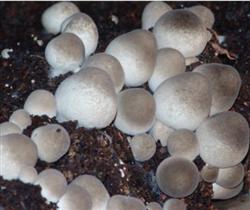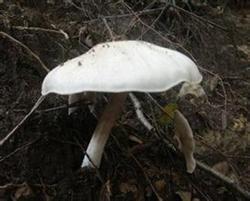What problems are often encountered in the cultivation of volvariella volvacea

1. The emergence of group mushroom sowing amount is too large, uneven sowing, will lead to the emergence of group mushroom. Therefore, the sowing rate should be controlled at 0.2-0.3 kg / m2. The sowing method can be layered sowing, mixed sowing or sowing, preferably without hole sowing. 2. If the aging strain is used, although the germination and colonization of the hyphae are normal, the yield of the first tide mushroom is also good. However, the yield of the second and third tide mushroom decreased significantly, and the overall yield decreased. Therefore, attention must be paid to the purchase of bacteria. 3. Excessive temperature difference leads to the death of small mushroom buds during the occurrence of fruiting body, ventilation and water spraying management must keep the cultivation environment as constant as possible, ventilation can only be carried out slowly, and pay close attention to the sudden change of climate. Window ventilation is strictly forbidden in windy days. When spraying water, we should also pay attention to the use of water temperature is consistent with the room temperature. 4. when the culture material is acidified and acidified, the growth of mycelium is weak, there is no sense of gloss, the occurrence of fruiting body is few and small, and it is easy to break the membrane and open the umbrella. At the same time, a large number of ghost umbrellas occurred. In order to prevent acidification, in addition to adjusting the pH value when preparing the culture material, the water management after sowing should be changed to spray 0.5% lime water. 5. When the culture material is too loose, the phenomenon is serious, resulting in mycelium fracture, thinning of the culture material and reduction of mushroom production. Therefore, after going to bed and sowing, we must pay attention to slightly compacting the culture material. If it is cultivated by stacking method, the pile shape should be low rather than high. 6. The use of deteriorating raw materials or culture materials for fermentation and disinfection of diseases and insect pests can lead to the breeding of a large number of miscellaneous bacteria and pests. Make a large number of young mushrooms on the bed die, rigid, rotten or teratogenic.
- Prev

Four measures to increase production of volvariella volvacea
1. Time arrangement and production mode indoor cultivation can be carried out by using mushroom rooms and other spare rooms. There are two kinds of outdoor cultivation: small arch shed and plastic greenhouse. No matter which way is used, it is necessary to meet the requirements of sunshade, windproof, heat preservation and moisturizing. The time of prolonging cultivation is basically close to but still lower than the growth of straw mushroom.
- Next

Chemical control of miscellaneous bacteria and pests of volvariella volvacea
Prevention and control measures of miscellaneous bacteria: ① try to choose fresh culture materials, exposure for 2 days before use, or soak the raw materials in lime water. ② control the nitrogen content of culture materials, fermentation materials or fermentation cultivation, the addition of wheat bran or rice bran should not exceed 5%, livestock manure should be 3%. No matter what kind of material is used for cultivation, it is best to make secondary fermentation.
Related
- Fuxing push coffee new agricultural production and marketing class: lack of small-scale processing plants
- Jujube rice field leisure farm deep ploughing Yilan for five years to create a space for organic food and play
- Nongyu Farm-A trial of organic papaya for brave women with advanced technology
- Four points for attention in the prevention and control of diseases and insect pests of edible fungi
- How to add nutrient solution to Edible Fungi
- Is there any good way to control edible fungus mites?
- Open Inoculation Technology of Edible Fungi
- Is there any clever way to use fertilizer for edible fungus in winter?
- What agents are used to kill the pathogens of edible fungi in the mushroom shed?
- Rapid drying of Edible Fungi

